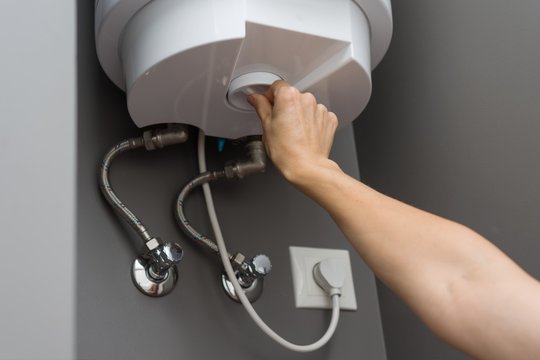Useful Techniques for Caring for Your Home's Hot Water System
Useful Techniques for Caring for Your Home's Hot Water System
Blog Article
What're your concepts about How to Maintain Your Water Heater & Prolong its Life?

Warm water is necessary for daily convenience, whether it's for a refreshing shower or washing recipes. To ensure your warm water system runs successfully and lasts much longer, regular maintenance is vital. This article supplies practical ideas and understandings on exactly how to keep your home's hot water system to prevent disturbances and costly repair services.
Intro
Maintaining your home's warm water system could seem complicated, yet with a few basic actions, you can guarantee it operates efficiently for several years to come. This guide covers whatever from recognizing your warm water system to DIY upkeep pointers and knowing when to contact expert aid.
Relevance of Maintaining Your Warm Water System
Normal upkeep not just extends the lifespan of your hot water system however likewise guarantees it runs efficiently. Overlooking maintenance can cause reduced performance, greater energy bills, and even premature failure of the system.
Signs Your Hot Water System Needs Maintenance
Understanding when your warm water system requires interest can stop significant problems. Watch out for indications such as irregular water temperature level, weird sounds from the heating system, or corroded water.
Purging the Hot Water Heater
Flushing your hot water heater eliminates debris accumulation, enhancing effectiveness and prolonging its life.
Checking and Replacing Anode Rods
Anode rods stop corrosion inside the storage tank. Inspecting and changing them when worn is important.
Complicated Concerns Needing Specialist Assistance
Examples include major leaks, electrical troubles, or if your hot water heater is constantly underperforming.
Regular Professional Maintenance Perks
Specialist upkeep can include comprehensive evaluations, tune-ups, and ensuring conformity with security criteria.
Checking and Changing Temperature Level Setups
Changing the temperature setups guarantees ideal performance and safety and security.
DIY Tips for Maintenance
You can do a number of upkeep jobs yourself to maintain your hot water system in leading problem.
Checking for Leakages
Frequently inspect pipes and links for leaks, as these can cause water damage and greater bills.
Recognizing Your Hot Water System
Before diving right into maintenance jobs, it's useful to recognize the fundamental components of your hot water system. Usually, this consists of the water heater itself, pipelines, anode rods, and temperature level controls.
Monthly Upkeep Tasks
Regular month-to-month checks can help capture minor problems prior to they intensify.
Examining Pressure Alleviation Valves
Evaluating the stress relief valve guarantees it operates correctly and protects against excessive stress buildup.
Protecting Pipelines
Insulating warm water pipelines reduces warm loss and can save energy.
When to Call a Specialist
While DIY maintenance is valuable, some issues need specialist know-how.
Conclusion
Routine upkeep of your home's warm water system is essential for effectiveness, long life, and price financial savings. By adhering to these tips and understanding when to look for specialist aid, you can ensure a trustworthy supply of warm water without unanticipated disruptions.
How to Maintain an Instant Hot Water Heater
Before tinkering with your hot water heater, make sure that it’s not powered on. You also have to turn off the main circuit breaker and shut off the main gas line to prevent accidents. Also turn off the water valves connected to your unit to prevent water from flowing into and out of the appliance. 2. When you’re done, you have to detach the purge valves’ caps. These look like the letter “T†and are situated on either side of the water valves. Doing so will release any pressure that has accumulated inside the valves while at the same time avoid hot water from shooting out and burning your skin. 3. When the purge valves’ caps are removed, you have to connect your hosing lines to the valves. Your unit should have come with three hoses but if it didn’t, you can purchase these things from any hardware or home repair shops. You can also get them from retail stores that sell water heating systems. Read the user’s manual and follow it to complete this task properly. When the hosing lines are connected, open the purge port’s valves. 4. You should never use harsh chemical cleaners or solutions when cleaning your unit. Make use of white vinegar instead. It should be undiluted and you’ll probably use about 2 gallons. 5. Now flush your water heater. This task should probably take about 40 minutes. We can’t give you specific directions for this because the procedure is carried out depending on the type, model and brand of your heater. With that being said, refer to the user’s manual. 6. When you’re done draining the unit, you have to turn off the purge port valves again. Remove the hosing lines that you earlier installed on each of the water valves. Put the valve caps (purge port) back in their respective places and be very careful so as not to damage the rubber discs that are found inside these caps. 7. Now that everything’s back in place, check your user’s manual again to find out how to reactivate your water heating system. 8. Once it is working, turn one of your hot water faucets on just to let air pass through the heater’s water supply pipes. Leave the tap on until water flows smoothly out of it. https://www.orrplumbing.com/blog/2014/september/how-to-maintain-an-instant-hot-water-heater/

I'm very involved in What Kind of Maintenance Do Water Heaters Need? and I'm hoping you enjoyed the new page. Sharing is nice. Helping others is fun. Thanks for being here. Come back soon.
Click Here Report this page